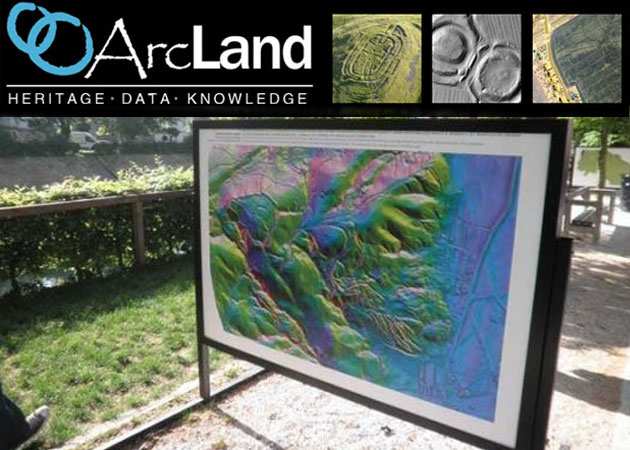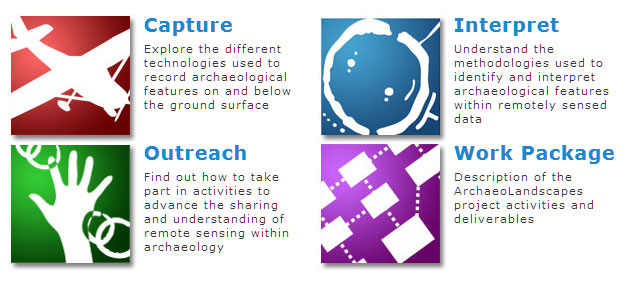The target of the ArchaeoLandscapes project is to address existing imbalances in the use of modern surveying and remote sensing techniques and to create conditions for the regular use of these strikingly successful techniques across the Continent as a whole. It aims to create a self-sustaining network to support the use throughout Europe of aerial survey and ‘remote sensing’ to promote understanding, conservation and public enjoyment of the shared landscape and archaeological heritage of the countries of the European Union.
The EC funded project “ArchaeoLandscapes Europe” (ArcLand) explores how aerial imagery and remote sensing is being used by archaeologists to understand our past.
The project represents the culmination of a growing European cooperation from the mid-1990s onwards. Now federating 42 prestigious institutions in the field of archaeology and heritage protection (1 Coordinator, 26 Co-organisers and 15 Associated Partners) from 26 separate countries, it will bring that process to a sustainable and self-supporting future as the long-term legacy of this and earlier EU-assisted initiatives.
The central theme of concerted action and cooperation will be stressed through annual meetings of the whole of the membership and the project’s Management Board, to agree policy, review progress and plan new initiatives. Much of the project’s work, however, will be undertaken through specialist ‘focus-groups’ and carefully structured ‘work-packs’ setting out operational programmes and timetables for each of the project’s eight key objectives or ‘Actions’.
Dialogue with target groups in the community will focus on multilingual and interactive web-based presentation. Use will also be made of leaflets, booklets and more substantial publications to engage both with ordinary citizens and with specialists in various aspects of heritage exploration, management and presentation.
The project’s long-term legacy will be better appreciation of the landscape and archaeological heritage of Europe, closer contact between heritage professionals and the general public, more effective conservation of the shared cultural heritage, the international sharing of skills and employment opportunities, better public and professional education, the wider use of archive resources and modern survey techniques, and higher professional standards in landscape exploration and conservation.
Browse the website and the wealth of information contained in the pages


